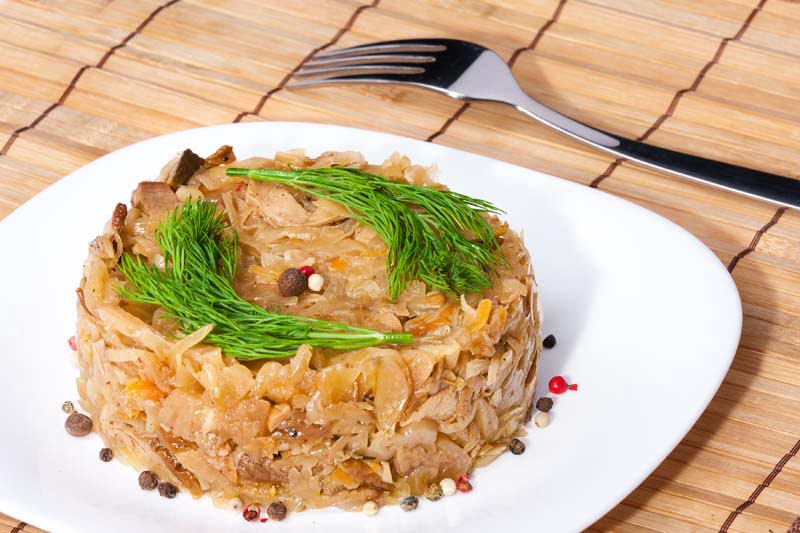Adapted from Vermont Valley Community Farm

1 medium head green cabbage (about 2 pounds)
1 large red or yellow onion, peeled and thickly sliced
1/4 cup chicken stock or water
1/4 cup lard, ghee, or bacon grease
Coarse salt and freshly ground pepper
1/8 teaspoon crushed red pepper flakes
Preheat oven to 325 degrees. Lightly grease a large gratin dish or baking dish (13-by-9-inch works well) with fat of choice.
Peel off and discard any bruised or ragged outer leaves from the cabbage. Cut cabbage in half, then into 8 wedges. (Don’t trim away the cabbage heart.) Arrange the wedges in the baking dish on their sides, overlapping a little but trying for a single layer. Scatter the onion over the cabbage. Drizzle with stock or water and the melted fat. Season with salt, pepper and pepper flakes. Cover tightly with foil and transfer to the oven.
Braise for 1 hour. Uncover and gently turn the wedges with tongs, keeping them as intact as possible. Add a little water if pan is drying out. Cover pan and return to oven. Bake 1 hour.
Remove the foil, increase the heat to 400 and roast until vegetables begin to brown, about 15 minutes. Serve warm or at room temperature, sprinkled with fleur de sel.
Sign up for our newsletter to receive updates about the farm, recipes and more!
This area is inspired by traditional Indigenous Medicine Wheel gardens. The four quadrants represent the four directions and four seasons. We created this garden to provide an opportunity to learn, teach and honour traditional Indigenous practices, perspectives and being.
– Etobicoke Outdoor Education Centre